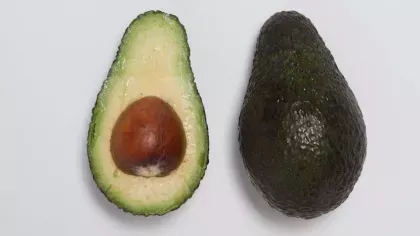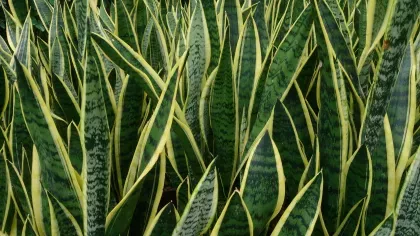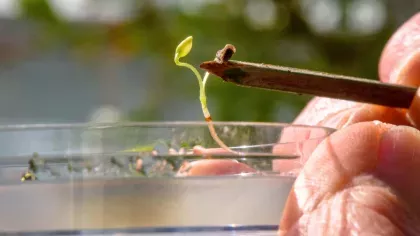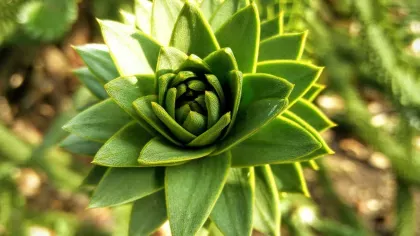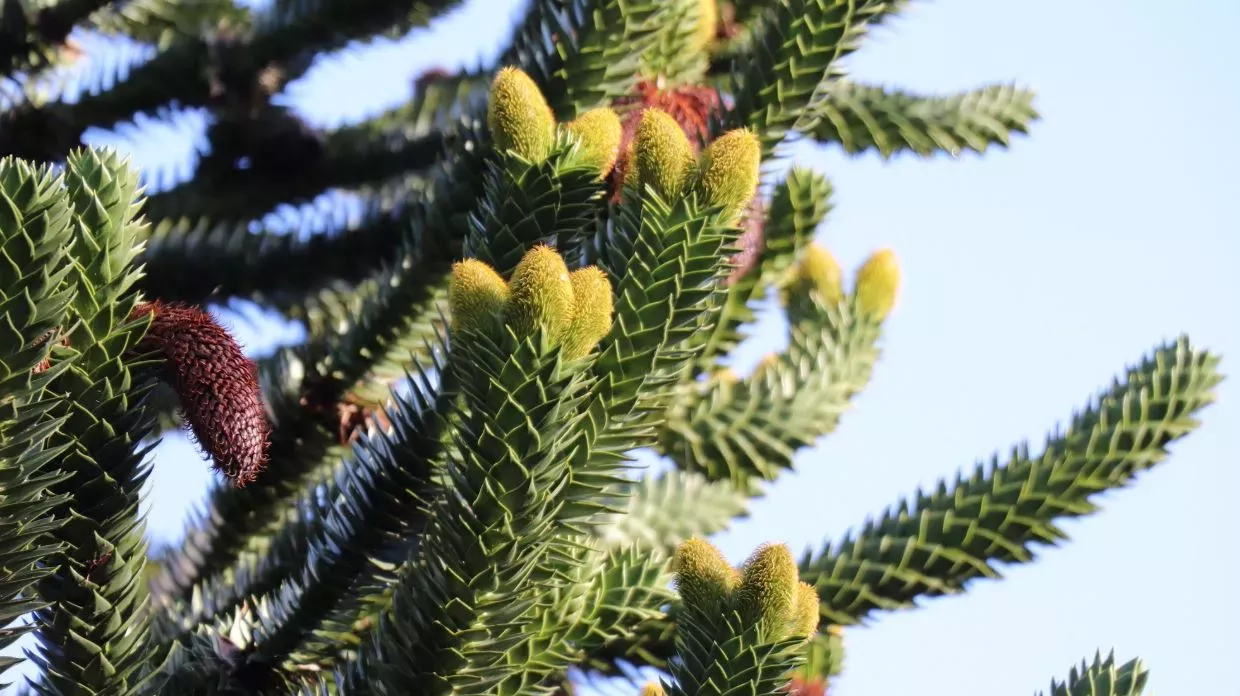
Monkey puzzle tree
On this page
The monkey puzzle tree is a common sight in gardens across the UK – this popular ornamental has a history dating back to the age of the dinosaurs.
Fossils from the Jurassic period show that plants very similar to the monkey puzzle tree have been growing for around 200 million years.
Despite surviving for so long, the monkey puzzle tree is now endangered in its native habitat across South America.
Illegal logging and forest fires put this magnificent and ancient species at risk of disappearing from the wild entirely.
Plant description
The monkey puzzle is an evergreen, pyramid-shaped tree that can reach up to 50m tall with a trunk circumference of 2.5m. The bark is gray-brown, smooth, and sticky with resin. Monkey puzzle leaves are thick, stiff, dark-green triangles and 3 to 4cm long. The leaves are spirally arranged around the branches and can last for up to 15 years.
Monkey puzzle trees are dioecious, meaning male and female cones grow on different trees. The male cones are cylindrical, around 13cm long, and start as green before turning yellow, then brown once the pollen is released. The female cones are spherical, around 17cm across and contain around 200 seeds each, which are released when the cones fall apart in autumn.






Plant uses
Cultural
The monkey puzzle is spiritually significant to native Araucanos tribes across South America.
The monkey puzzle tree is popular across the world as an ornamental in gardens.
The monkey puzzle is the national tree of Chile.
Food and drink
The Araucanos traditionally ate the seeds, usually roasting and mashing them.
The dried seeds are made into flour, which the Araucanos use to make a fermented beverage known as muday.
Materials and fuels
The local peoples of Chile and Argentina used monkey puzzle trees for fuelwood and construction.
When European colonialists came to South America, monkey puzzle trees were logged for use as railway sleepers, pit props in mines, ship masts, and for paper pulp.
The seeds of monkey puzzle trees are used as animal feed.
Did you know?
The monkey puzzle gets its scientific names, Araucaria araucana, from the Araucanian people who live alongside the tree.
The monkey puzzle gets its odd common name from a story stating upon seeing the tree, someone remarked 'It would puzzle a monkey to climb that'.
The roasted seeds of the monkey puzzle tree are reported to taste like hazelnut.
Monkey puzzles were first introduced to Britain in 1795 by plant collector Archibald Menzies – he planted two seedlings at Kew, grown from large pine nuts he had been served as dessert by the Governor of Chile.
Where in the world?

Native to southwest Argentina and southern and central Chile, 600 to 1,800m above sea level. Prefers temperate climates with abundant rainfall, tolerating temperatures as low as -20°C.
Find it in our gardens
Kew Gardens
A botanic garden in southwest London with the world’s most diverse living plant collection.
Location
View map of Kew GardensBest time to see
Wakehurst
Kew’s wild botanic garden in Sussex that has over 500 acres of plants from around the world and is home to the Millennium Seed Bank.
Location
View map of WakehurstBest time to see
Our work
In 2009, Wakehurst staff, including propagation manager Jo Wenham, took part in an expedition to Chile, along with seed bank partners INIA (Agricultural Research Institute of Chile) and the UK Forestry Commission.
They brought back more than half a million seeds from 80 different species of plants. Many of these were banked in Kew’s Millennium Seed Bank.
Unfortunately, not all seeds can be stored at the sub-zero conditions of the seed bank. This includes monkey puzzle seeds, as they can’t enter full dormancy in a chilled environment.
Jo’s answer was to raise hundreds of young monkey puzzle trees from seed and plant them out in a new Chilean woodland at Wakehurst.
Today, on a steep hill in Coates Wood, you can find over 60 monkey puzzles, collected from Chile, and grown at Wakehurst.



